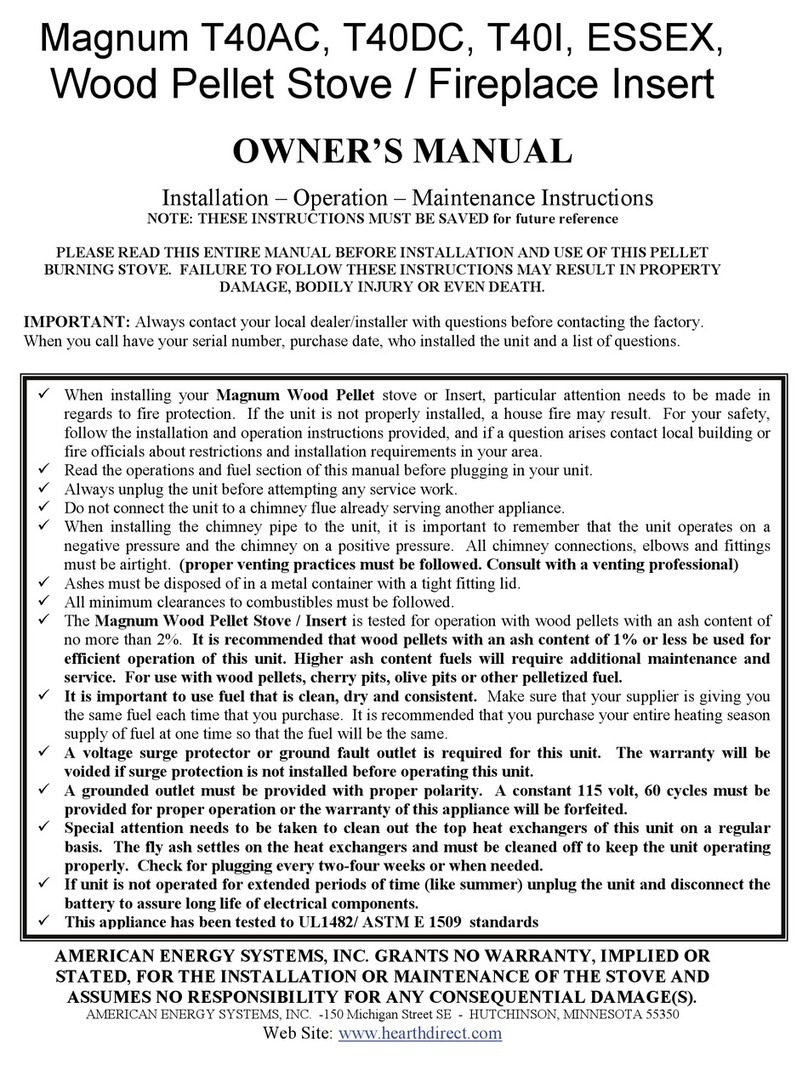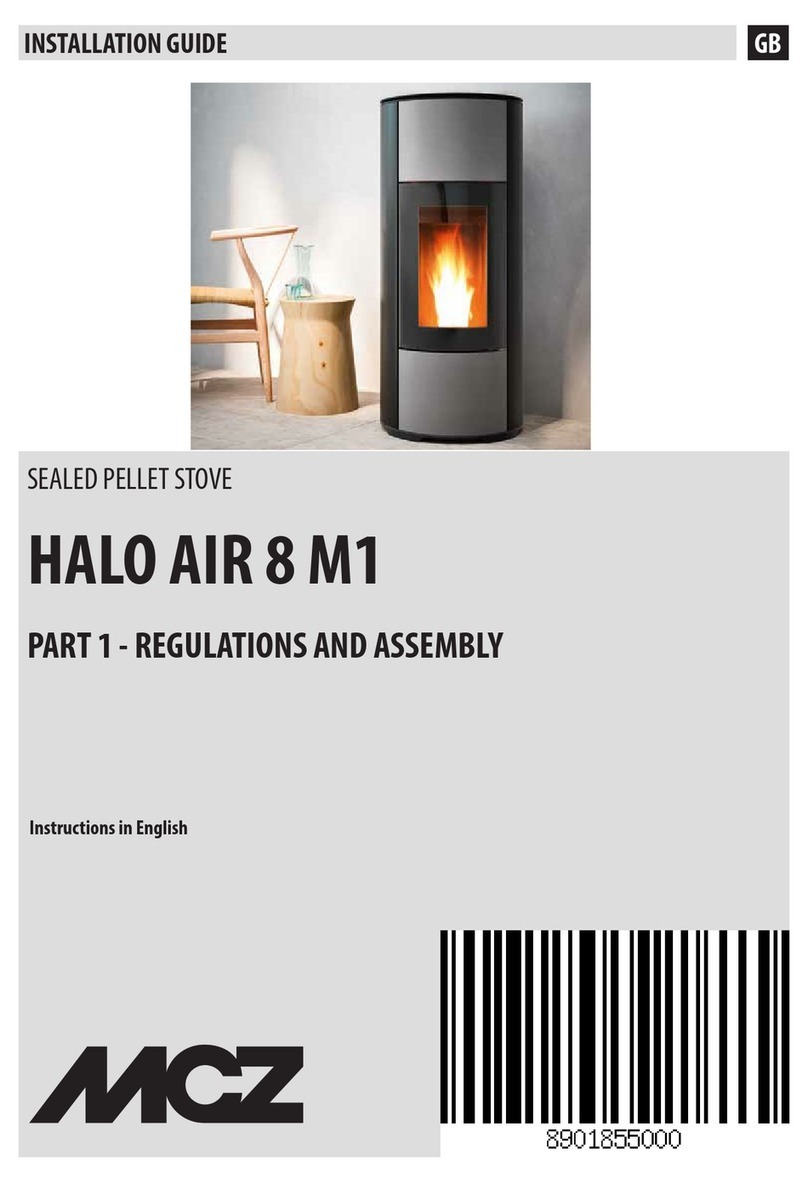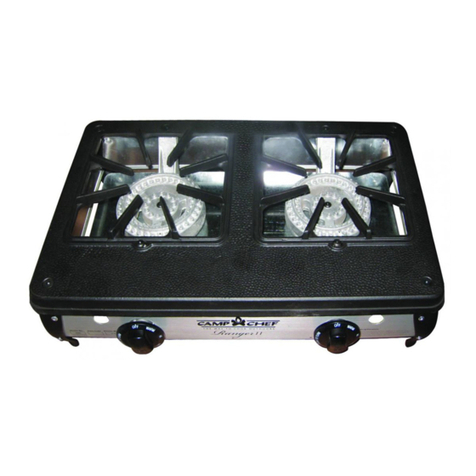BFM No2 User manual

Solid Fuel Central Heating Stoves Manual v3. Issued - 22/07/2014 (421)
o2 MULTI-FUEL SOLID FUEL
CE TRAL-HEATI G STOVE
WITH AUTOMATIC CO TROL
I STALLATIO A D OPERATI G I STRUCTIO S
LEAVE THIS DOCUME T WITH THE HOUSEHOLDER!
All BFM Stoves exceed the safety and performance requirements of European Standards
Intermittent burning solid fuel roomheaters for installation with a single dedicated chimney.
Independently tested by SGS Environmental Services in 2012
BFM o2 Central-Heating Stove
Fuel Mineral fuel (Anthracite) Biomass (Wood Logs)
Test Standard EN 13240:2001 A2:2004
Test Cycle 2.01 kg per 1 hr 3.2 kg per 0.69 hrs
Flue Draught Pa (ins WG) 12 12
Efficiency % 80.4 72.7
Recommended Rating to room kW (btu) 5.1 (17,400) 5.8 (19,800)
To water, kW (btu) 9.7 (33,000) 8.9 (30,300)
Total Output, kW (btu) 14.8 (50,500) 14.7 (50,200)
Mean Flue Gas Temp Rise ºC 249 298
Minimum room air entry requirement 8000 mm² (or by manufacturer's air supply kit)
Minimum Clearance to combustibles (allow min 50mm
clearance to non-combustibles)
100mm at sides and back
Temperature underneath can exceed 100°C - traditional hearth required
Emissions as
if 02=13%
NOx mg/m³ 125 67
CO % 0.14 0.79
CxHy mg/m³
Gas flow g/sec 12.4 12
Smoke Emission mg/m³ 31 366
I declare that this information is true, these products meet the requirements of Harmonised Standards and are fit for sale.
Signed on behalf of the manufacturer by Glyn Hughes, Design Engineer, at Winster, Derbyshire, England 22. Jul. 2014
Read these instructions! Use only recommended fuels!
This document, when completed by the installer, constitutes part of a 'Hearth Notice' for purposes of
Building Law. It must be left with the householder and placed where it can easily be found.
INSTALLED AT LOCATION:
BY:
EMERGENCY CONTACT:
Flue Draught
measured on
commissioning:
Fuel used on
commissioning
I definitively assert that this installation is safe, has been lit and demonstrated to the
householder, conforms with current building regulations and with these instructions
SIGNED: DATE:
TO FI D A QUALIFIED I STALLER, FUEL SUPPLIER or CHIM EY SWEEP,
CO TACT:
UK: The Solid Fuel Association, 7 Swanwick Court, Alfreton, Derbyshire DE55 7AS
Tel:0845-601-4406 www.solidfuel.co.uk
RoI: Irish Nationwide Fireplace Organisation, 162 Capel Street, Dublin 1 Tel:01-801-
5959 www.fireplace.ie
Trentham Lakes, Stoke on Trent, Staffordshire, England ST4 4TJ
www.bfm-europe.com Tel 01782 339000 Fax 01782 339009
1
PRODUCTION NUMBER
Pa
WG

IN 1830 Charles Portway built a stove to heat his ironmongery shop at Halstead in Essex It was
so good that his neighbours started asking for them Mr Portway had done something completely
new - designed his stoves right from the start to give out the maximum heat from the minimum
fuel, so that he is known as "The Founding Father of Energy Efficiency". These stoves are
still made in Britain by the direct successors of the company he established
Building rules and regulations are available at www.soliftec.com
I STALLI G a stove is a 'controlled service', the law expects that
it is either supervised by a qualified installer or that the building
inspector is informed. Check with your local authority.
ASBESTOS: Your stove does not contain asbestos, but take care
to avoid disturbing asbestos in an old installation.
WEIGHT: Your stove is heavy - take great care when moving it
and ensure that the intended fireplace can support the weight-
consider fitting a load distributing plate.
YOUR CHIM EY, by becoming warm, makes the gas inside it
rise, pulling fresh air into the stove to make it work. It must:
●Generate a draught in use of at least 12Pa (0.05ins wg)
●Be capable of withstanding the temperatures generated.
●Be absolutely incapable of leaking fumes into the dwelling
This may commonly be achieved by it:
●Being at least 5m high.
●Terminating at least 1m above any roof ridge.
●Having an internal cross-section equivalent to not less than
150mm dia and never more than 0.14m² (eg 375 x 375mm)
●Being free from even the slightest crack or source of leakage.
●Having no bends sharper than 45º.
●Being swept and entirely free of obstructions
●Being connected only to this one appliance.
●Being of thick masonry or otherwise adequately insulated.
●Conforming to local building regulations.
Special rules apply where the flue passes through timber, thatch or
other vulnerable materials- take specialist advice.
Although it is possible to access the chimney for cleaning through
the fire with the throat plate removed, fit hatches to provide access
if needed.
YOUR FIREPLACE: Stoves become VERY hot, the setting must
be made entirely of durable fireproof materials. take care to
observe the safe distances to combustibles shown on the front
page.
AIR SUPPLY: Your stove needs air to breathe - if air supply is
simply by way of a permanent fresh air supply into the room where
the stove is installed, it must equal 550mm² for each kW of
nominal output. An extractor fan, or another fuel-using appliance in
the same building, can remove this air.
The supply tube and outside grille in
the BFM Safety Air Supply kit,
available as an extra, provides the
correct fresh air for combustion and
ventilation from outside, without
draughts across the room, without
need for further vents and meets the
complete requirements of UK and RoI
Building Regulations.
FITTI G
Adjusting the thermostat: Check the thermostat on the
side of the stove before fitting! With the fire cold, the
thermostat sensor in place in its hole towards the rear top of
the boiler and the thermostat control turned to '1' the air
closure 'damper' plate should be approximately 7 mm open.
Fasten the flue outlet to the top of the stove and seal to the
chimney using a short (up to about 0.5m) length of
uninsulated pipe. Two possible ways of doing this are shown.
Whichever method is used it is imperative that the route for
gases from the stove to the chimney terminal is completely
air-tight; even the tiniest gap or crack can spoil the updraught.
Seal all joins with fireproof cement and/or heatproof rope.
HEATI G SYSTEM DESIG
This appliance is for use with an open-vented water heating circuit at a maximum pressure of 1.5 Bar, equivalent to a static head of 15
metres (50ft). Suggested circuit designs are given on a separate sheet.
IMPORTA T! CHECK THE I STALLATIO !
Once installed, light the fire, demonstrate it to the householder and check that:
1) It burns controllably and does not emit fumes to the room
2) The route for gases from the stove to the chimney terminal is completely airtight, unobstructed and able to be swept . (access
hatches may be required.)
3) The installer has completed the notice at the beginning of this document, demonstrated the method of lighting, control and cleaning, and
pointed out the safety requirements to the householder.
4) The entire fireplace construction is of durable fireproof materials.
5) The flue presents a draught in use of at least 12Pa
6) A CO alarm is fitted
7) The water system has provision to dissipate or store surplus heat, can accommodate boiling, and has means to minimise the
circulation of cool water through the boiler.
2
THIS APPLIA CE BECOMES EXTREMELY HOT
A D CA PRODUCE POISO OUS GASES.
A fire-guard should be used if children or the infirm are
present. The installer is required to EXACTLY follow
these instructions and to completely comply with all
local, national and international standards.
Through steel or concrete closure plate
(with cleaning door) into old, oversized,
chimney. Steel sealing collar.
45º top outlet sleeved
through wall into external
insulated flue. Cleaning
hatches on bends.

LIVI G WITH YOUR STOVE
Every fuel, chimney and condition of use is different. Only
experience will show which are the best settings for you.
LIGHTI G If lighting after a period of non-use, do check that the
flueways and chimney are completely clear. Empty the ashes if
need be. Place two or three firelighters close together, or screwed-
up paper covered with dry sticks, at the back of the grate and light
them. When they are burning
well gently fill the fire with dry
fuel. FILLI G: Don't fill to the
point where fuel touches the
'baffle plate' in the roof of the
stove.
CO TROL. Correctly installed
(see separate sheet) this stove
will control itself for minimum
fuel consumption.
The two manual controls on the
front can be helpfully used
when first lighting or refuelling,
but keep both shut, or nearly so, in normal use.. You can open the
lower Door Air Slide to help the fire get going - make sure to
close it after just a few minutes. If using smoky fuels such as wood
or some 'smokeless' fuels, open the Airwash Slide above the
door to allow in extra air to help burn-off the dirty gasses and keep
the window clean.
The Thermostat Dial on the lower right of the stove controls a
device which senses the temperature of water in the boiler and
automatically allows air in to make the fire burn more or less
fiercely, so that water always leaves the boiler
at about 50ºC on setting '1' to about 90ºC at
'10'. Once you have found the most
appropriate setting for your house - usually
about '7' - it shouldn't be necessary to adjust it
again. To adjust the house temperature,
adjust the radiator thermostats (if fitted) or
your central wall-mounted room thermostat.
These controls will then automatically limit or
allow the flow of water through the boiler,
which will adjust itself accordingly. Your fire
will die down or flare up and the central heating pump go on or off
as needed in response to the temperature of rooms and water.
When you adjust the central controls, wait an hour or two for the
adjustment to 'bed in' - controls are deliberately made to react
slowly to prevent rapid on-off-on-off cycling.
EMPTYI G ASHES. If you're using mineral fuels like anthracite or
manufactured smokeless fuels - then empty the ash regularly, if it
builds up it will severely damage the grates. If you mainly use
wood, then do the opposite, let the ash and charcoal build up. To
empty the ash agitate the firebed by using the door handle to
operate the riddling mechanism on the right-hand side. Use the
ashpan tool to lift out the ashpan. Remember to let ash cool before
disposing in plastic sacks or dustbins. There is no need to empty
every last speck, but ash from mineral fuels (coal etc) should
never be allowed to build up so that it comes into contact with the
underside of the grate.
EXTE DED BUR I G Allow the fire to burn down to a low, hot
firebed. Empty the ash, fully fill with hard fuel such as anthracite
and your stove can burn for up to twelve hours without attention.
KEEPI G THE WI DOW CLEA . Reduce the risk of staining by
using only very dry fuel and keeping the Airwash Slide above the
door at least slightly open when using smoky fuels such as wood.
Severe stains can be removed when cold with a domestic bleach
cleaner. The window is not glass but a transparent ceramic, it may
develop tiny hairline cracks, these are harmless, and a
characteristic of the toughest and material known.
OPE I G THE DOOR This stove is designed to be operated only
with the door closed. Open the door very slowly to minimise fume
emission and prevent hot fuel falling out. Pull the door handle off
when not being used to prevent it overheating.
SUMMER SHUT DOW : Before a long period of non-use, empty
fuel and ash, remove the throat plate and leave all the air controls
open to allow ventilation to reduce condensation.
FUELS
There is no 'perfect' fuel, so we strongly recommend that you try a
selection of fuels (or mixtures) to find which suits you best. Do
avoid dusty materials like sawdust, they can burn far to violently.
SMOKE CO TROL: In certain areas special rules apply to reduce
smoke nuisance. Check with your local authority.
WOOD only emits as much carbon
to the atmosphere as the tree took
in when growing, so wood is
considered the 'carbon neutral' fuel.
When wood is cut down its cells are
full of water. Burning such wet or
'green' wood wastes heat in making
steam and produces flammable, acidic tars which will cling to, and
rapidly damage, your stove and chimney. Split logs will typically
take two years to become reasonably dry, round logs very much
longer. Cracks in the ends, a hollow sound when tapped and bark
falling away are all signs that a log may be ready for use. The fine,
white residue produced when wood burns is not ash, but the
remains of cell walls which can burn if kept hot enough, so don't
de-ash the fire until absolutely necessary when using wood.
For best performance, and always for low smoke emission:
●Split logs lengthways for drying
●Use logs no bigger than about 100mm x 250mm
●Ensure logs are absolutely dry (less than 20% moisture)
●Fill the stove loosely, so air can circulate between logs.
●Fill 'little and often'
●Always have the Airwash Slide at least a little open when
lighting or refuelling.
●When first lighting, or reviving a fire from embers, use only very
small, thin, dry, sticks.
●Keep a constant, deep, bed of charcoal and wood ash beneath
the burning logs. This may need several firings to build up.
JOI ERY WASTE Dry wood offcuts will burn well, but don't expect
softwood waste to burn as cleanly or for as long as hardwood logs.
PEAT: Sod turf must be thoroughly dry. BNM peat briquettes are
approved for use in Smokeless Zones in the RoI.
LIG ITE or BROW COAL (not smokeless) is a natural mineral,
between peat and coal. It lights easily and burns well, but
produces much ash.
HOUSECOAL or BITUMI OUS COAL (not smokeless) makes
lots of tarry smoke and large volumes of flammable gas which
make it difficult to control and risk explosions. Despite its low cost,
it rarely represents value for money. Don't use housecoal.
A THRACITE (Smokeless) is a natural hard, shiny form of coal.
Slow to light, it can burn for very long periods with great heat.
Despite its high price-per-bag it generally works out to be one of
the cheapest of all fuels. Use the 'small nuts' size.
COKE (Smokeless) is coal from which the smoke has been
removed. Sometimes difficult to light, it burns very cleanly.
BRIQUETTES Are compressed blocks of fuel, generally able to
burn for long periods and remarkable for their consistency.
'Homefire' and 'Phurnacite' are smokeless types while other
brands are made from lignite, peat or housecoal.
PETROLEUM COKE sold as 'Petcoke', 'Longbeach' and other
names, is made from oil, should not be used, it will rapidly degrade
interior parts.
HOUSEHOLD WASTES Some plastics give off toxic fumes when
burned and remember that batteries and aerosols explode! The
stove is not an incinerator, so only ever use the recommended
fuels and NEVER use liquid fuels in any form.
PROBLEMS?
Problems like those listed here are usually due to some difficulty
with the installation, chimney or fuels, so please check back
through this leaflet carefully. If necessary seek specialist advice.
SMOKE FROM THE CHIM EY It is quite normal for a little smoke
to be emitted from the chimney, especially when the fire is cold.
Use only VERY dry wood or smokeless fuels and have the
Airwash above the door open at least a little.
POOR HEAT OUTPUT: This appliance is very easily capable of
producing the quoted heat outputs given suitable fuels and a
chimney capable of developing sufficient draught. Is the chimney
too short or becoming cool or damp? Is the fuel completely dry?
3
Use radiator or
room thermostats to
control the system,
not the controls on
the stove

Have the central controls been set correctly? Is the building
sufficiently well insulated?
THE DOOR CATCH may need adjusting as the rope seal 'beds
down'. Simply loosen the screw
at the end of the shaft and move
the tapered pin as shown. Re-
tighten the screw.
CO DE SATIO onto cool
surfaces inside the stove can be
severe if fuel is in any way damp.
Use only very dry fuel It is vital that the heating circuit is fitted with
a device, such as a low-limit thermostat, to minimise cold water
circulating through the boiler.
SMOKE COMI G I TO ROOM Fumes are poisonous- smoke
emission must NEVER be tolerated, causes might be:
NEW STOVE: There is often a smell and sometimes visible fumes
as the paint cures. This normally stops after an hour or so.
INADEQUATE SEALS: Are all flue pipes and connectors
absolutely gas-tight? Even the tiniest crack or gap can spoil the
draught. Does an inset appliances fully seal against the fireplace?
BLOCKED THROAT PLATE: Has soot and ash collected on the
'throat plate' above the inner back part of the firebox?
UNSUITABLE, BLOCKED OR UN-SWEPT CHIMNEY: The first
requirement for correct operation is a sound chimney. Check the
requirements earlier in this document and in any case of doubt
engage a professional sweep or chimney engineer.
POOR AIR SUPPLY: Lack of air to the fire is a common cause of
smoking and poor performance. Air supply problems may be
worse in certain wind conditions (often incorrectly ascribed to
'downdraught', which is in fact very rare), where air can be sucked
out of the room. The answer is to fit an air vent, as near to the fire
as possible, facing into the usual wind direction.
DOWNDRAUGHT: Wind can blow down a chimney if there is
something higher nearby such as a tree, hill or high building.
Fitting an anti-downdraught cowl to the chimney top can cure this.
Types which cannot be swept through are not recommended.
POOR CHIMNEY DRAUGHT- Chimney draught in use MUST be
at least 12Pa.
CHIM EY FIRE: In the rare event of deposits inside the chimney
igniting (roaring sound dense smoke and sparks from the
chimney) immediately close the door, shut all air controls and call
the fire brigade. Prevent fires by using very dry fuel and having
your chimney swept regularly.
MAI TE A CE
MO THLY- With the fire cold, use the ashpan handle tool to lift,
pull forward and lower the baffle (or 'throat plate') fitted inside the
top of the stove. Check that it is clear and unblocked. Check that
the the door seals are sound.
A UALLY- SWEEP THE CHIM EY The entire length of the
chimney from stove to outlet should be swept annually, more often
if smoky fuels are used.
EW PARTS Your stove has been extensively tested for safety -
please don't try to modify it and always obtain genuine spare parts.
SURFACE FI ISH Wipe the stove body with a slightly damp cloth
when cool. NEVER use aerosol spray or wax near the hot fire –
they can ignite. Painted steel parts can be refurbished using
special spray paint. Coloured doors are traditional hand-applied
vitreous enamel - it will have small surface imperfections and,
while virtually immune from fading, rust and scratches, it can chip.
Enamel cannot be repainted or repaired.
Your stove generates VERY high temperatures. Eventually the
internal parts will require replacement . Help parts to last by:
●Using only recommend, very dry, fuels.
●Emptying the ash very regularly when using mineral fuel -never
allow it to touch the underside of the grate.
●Cleaning the throat plate regularly.
●Avoiding 'over-firing'
PARTS A D ACCESSORIES
Standard Spare Parts for BFM No2 Central Heating Stove
BFM Spares Direct: Tel. 01782 339034 Fax 01782 339028
4
The Portway, Flavel and BFM stove designs are registered at the UK Patent Office and protected by Copyright © and UK Design Right, Glyn Hughes 2006-2012. Certain parts are
UK Patent Applied For. This document printed 22/07/2014. We are always striving to improve these products and may change their specification without notice.
Popular Stove manuals by other brands

Extraflame
Extraflame ELLA user manual
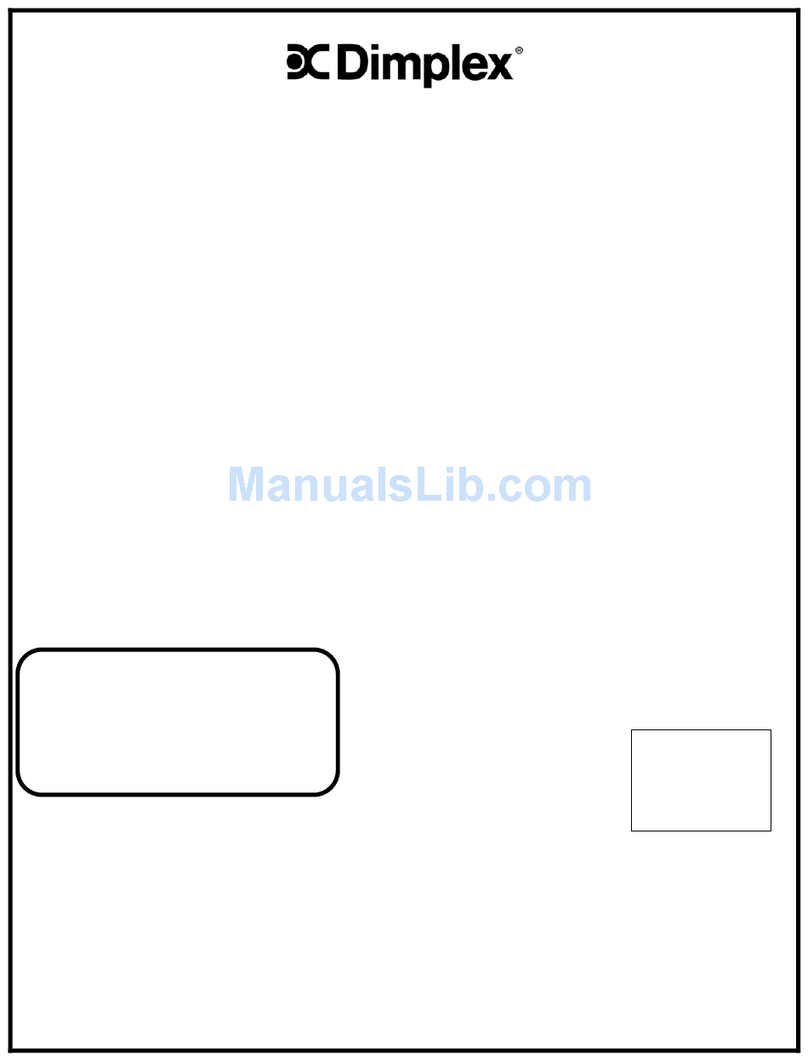
Dimplex
Dimplex Corner Standing Stove user guide
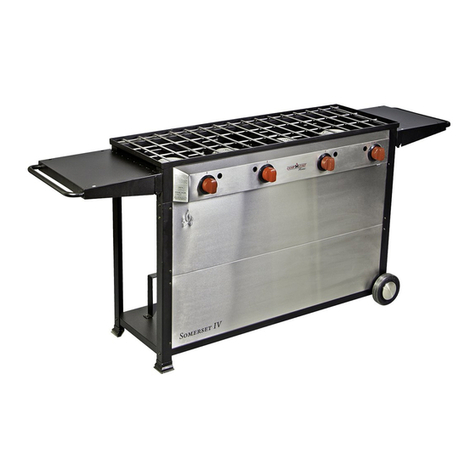
Camp Chef
Camp Chef Home Somerset IV Assembly instructions
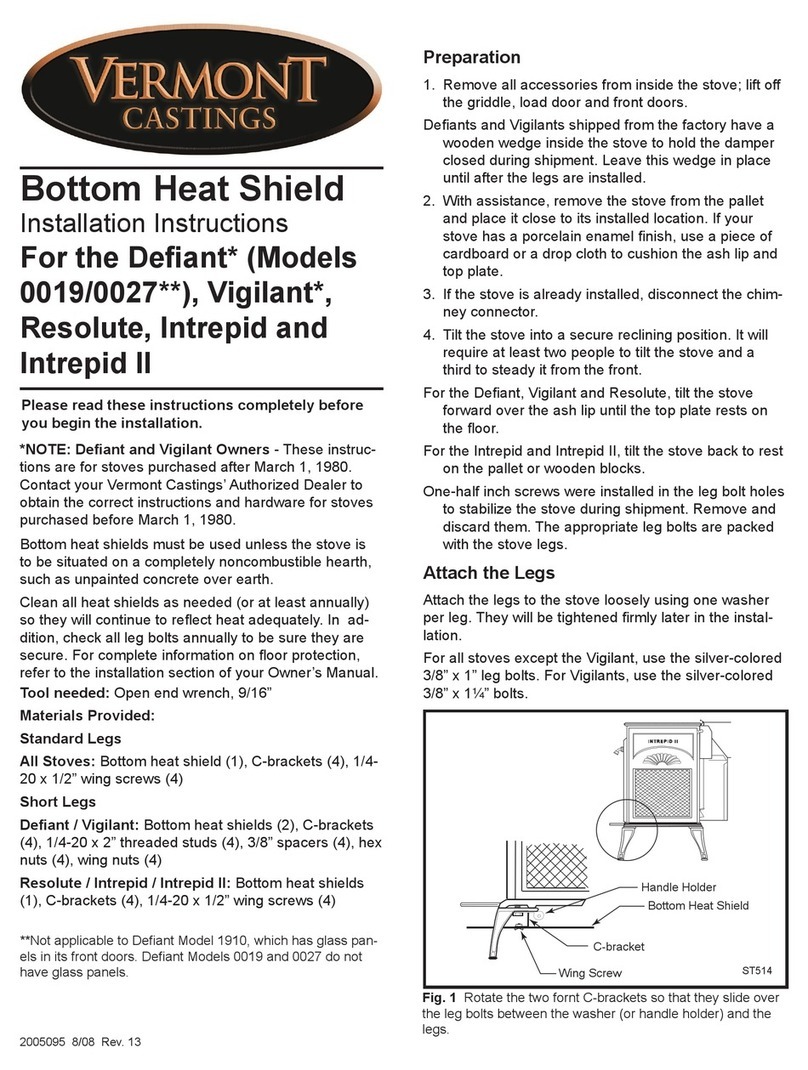
Vermont Castings
Vermont Castings Vigilant installation instructions
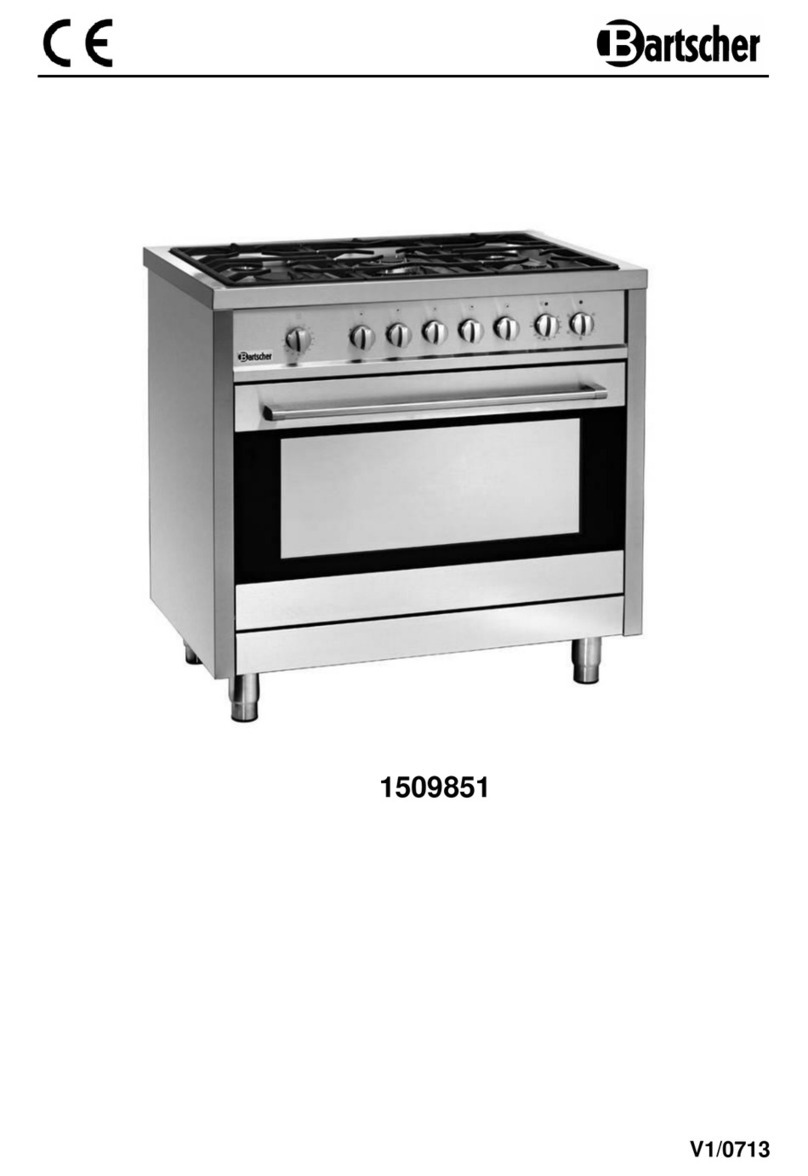
Bartscher
Bartscher 1509851 instruction manual

Piazzetta
Piazzetta 600 HT Instructions for installation, use and maintenance

Nordica
Nordica VIOLETTA Instructions for installation, use and maintenance
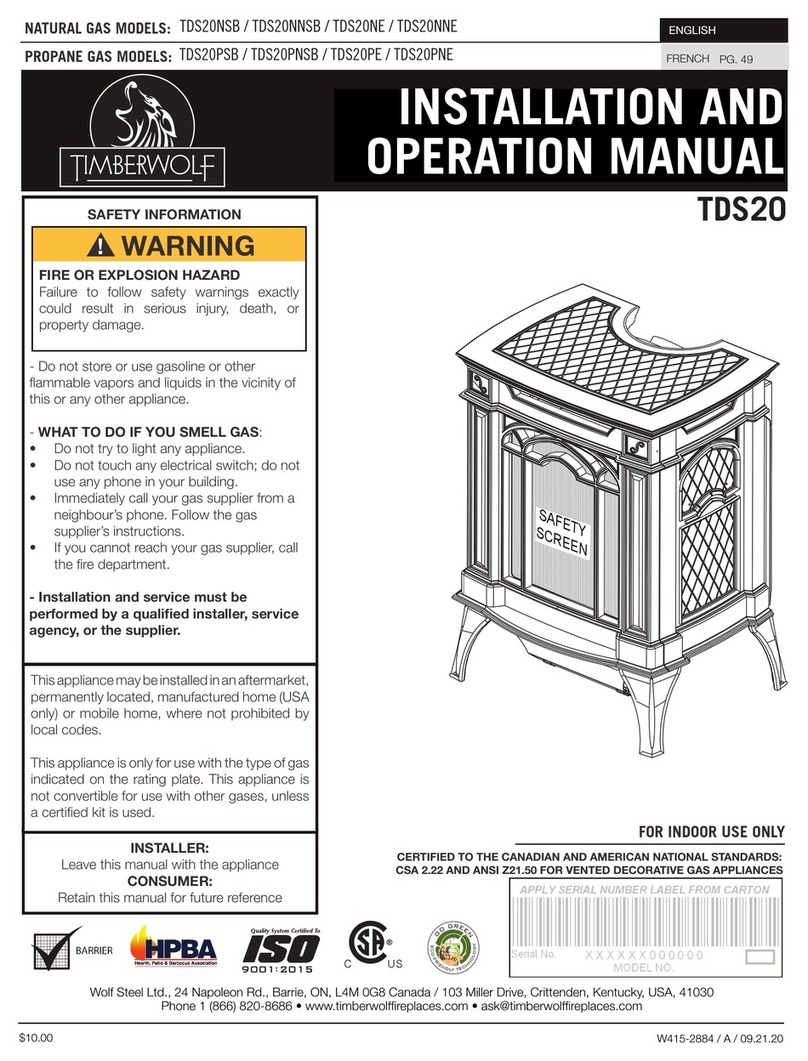
Timberwolf
Timberwolf TDS20 Series Installation and operation manual

Blaze King
Blaze King 9603R Owner's installation and operation manual
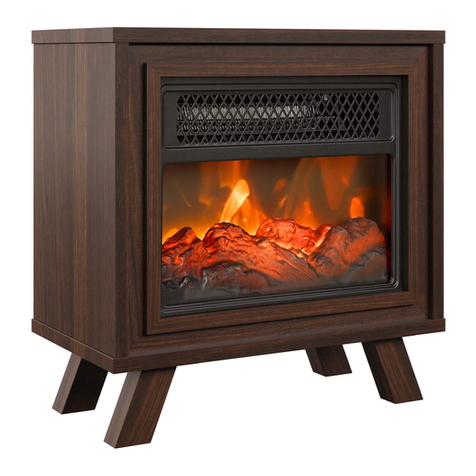
Duraflame
Duraflame DFS-12001-PC42 manual

Harman
Harman Oakwood Installation & operating manual

LAMINOX
LAMINOX Jessica Natural SN Use and maintenance instructions

